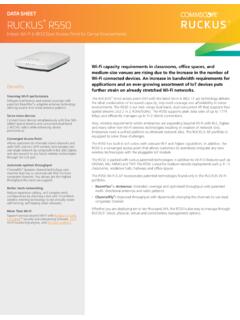Transcription of Amputee Rehabilitation
1 Amputee RehabilitationLynn Cunningham, PT, DPTH elena Lax, MDMark Nielsen, CP, ATCO bjectives Participants will be able to identify common causes for upper and lower extremity amputation and demonstrate an understanding of the medical complications that require management throughout both the pre and post-prosthetic phases of Rehabilitation . Participants will be able to identify each phase of Rehabilitation for the lower extremity Amputee and list several interdisciplinary goals related to each phase. Participants will be able to identify basic upper and lower extremity prosthetic componentry and recognize more advanced options for prosthetic Participants will demonstrate an understanding of coding and reimbursement issues related to upper and lower extremity prosthetic prescription.
2 Participants will be able to identify several resources available to the individual with upper and lower extremity amputation. Course Outline Demographics & Etiology Terminology Surgical Considerations Phases of Amputee Rehabilitation Amputee Education Current Prosthetic Management Case Study Amputee ResourcesDemographics & EtiologyDemographics & EtiologyCurrently, there are an estimated 2-3 millionpeople living with limb loss in the United States Lower limb amputations performed annually in the USA1989: 127,000 per year1999: 185,000 per yearThe number of people living with limb loss in the USA is expected to double by 2050 due to growing rates of diabetes and vascular & EtiologyLower Extremity AmputationMain Causes of Lower Extremity & EtiologyLower Extremity Amputation#1 Cause of Amputations DiseaseDiabetes Mellitus (DM)Peripheral Vascular Disease (PVD)Chronic Venous Insufficiency (CVI)Diabetes According to the Centers for Disease Control and Prevention, in 2009 there were 68,000 amputations due to complications from diabetes Of persons with diabetes who have a lower extremity amputation, up to 55% will require amputation of the second leg within 2 3 years.
3 25% mortality 1 year after amputation. 50% mortality 3 years after & EtiologyLower Extremity Amputation#2 Cause of Amputations Trauma Leading causes of -Powered tools and -Firearms8% -Motor Vehicle CrashesDemographics & EtiologyUpper Extremity AmputationIncidence Less than 5% of all amputations are UE amputationsEtiology 90% Trauma 5% Congenital 5% OtherDemographics & Etiology In 2009, hospital costs associated with amputation totaled more than $ billion. The lifetime healthcare cost for people with a unilateral lower-limb amputation is estimated to be more than $500,000. For people with a unilateral lower-limb amputation, the two-year healthcare costs is estimated to be $91, : When the amputation is across the axis of a long boneDisarticulation: When the amputation is between long bones, which anatomically is through the center of a jointPartial.
4 Amputations of the foot distal to the ankle joint and of the hand distal to the wrist jointTerminologySound Limb The intact healthy limbResidual Limb The extremity of a limb left after amputation, Stump International Organization for StandardizationISO Standard Nomenclature for the Lower Limb Ankle (Syme) Disarticulation TranstibialAmputation Knee Disarticulation TransfemoralAmputation Hip Disarticulation TranspelvicAmputationInternational Organization for StandardizationISO Standard Nomenclature for the Upper Limb Wrist Disarticulation TransradialAmputation Elbow Disarticulation TranshumeralAmputation Shoulder Disarticulation Forequarter AmputationPartial Foot AmputationToe Amputation Excision of any part of one or more of the toes Common Accounts for 24% of DM amputationsToe Disarticulation At metatarsophalangeal joint May result in biomechanical deficiencies.
5 Amputation of Great Toe 2nd Digit AmputationBelow Knee Amputation TranstibialAmputation Most Common LE Amputation through the tibia (and fibula) Fibula is usually transected 1-2 cm shorter than tibia to avoid distal fibula painKnee Disarticulation Amputation through the knee joint Offers good weight distribution ability and retains a long, powerful femoral lever arm Yields a non-cosmetic socket due to need for external joint mechanismSupracondylar Amputation Patella is left for better end weight-bearing Area between end of femur and patella may delay healingAbove Knee Amputation TransfemoralAmputation Amputation through the femurHip Disarticulation Uncommon Involves loss of all of the femur Usually done in cases of malignant tumors, extensive gangrene, massive trauma, or advanced infectionHemipelvectomy TranspelvicAmputation Uncommon Involves loss of any part of the ilium, ischium.
6 And pubis Usually done in cases of malignant tumors, extensive gangrene, massive trauma, or advanced infectionUpper Extremity AmputationsUpper Extremity Amputations Partial Hand AmputationLevels of partial hand amputation: 1. Transphalangeal; thumb spared. 2. Thenarpartial or complete. 3. Transmetacarpal, distal; thumb spared or involved. 4. Transmetacarpal, proximal; thumb spared or Extremity Amputations Partial Hand AmputationUpper Extremity Amputations Wrist Disarticulation Amputation through the wrist jointUpper Extremity Amputations TransradialAmputation Amputation through the radius (and ulna)Upper Extremity Amputations Elbow Disarticulation Amputation throughthe elbow jointUpper Extremity Amputations TranshumeralAmputation-Amputation through the humerusUpper Extremity Amputations Shoulder DisarticulationSurgical ConsiderationsSurgical Considerations Ultimate Question:Amputate?
7 OrLimb Salvage? The notion that limb salvage needs to be obtained in all patients at all costs may often lead to the triumph of technique and technology over reason. Surgical Considerations Amputation is a reconstructive operation Pre-operative planning is essential Surgical Objectives: Remove all diseased and damaged anatomy Construct a residual limb that functions Preserve as much functionallength as possibleSurgical ConsiderationsAmputations should be performed at the most distal site compatible with wound healing to achieve the optimal potential for ambulationLowest Palpable PulseSkin TemperatureBleeding at SurgerySurgical ConsiderationsThe residual limb should have sufficient soft-tissue coverage to resist the shear forces involved in prosthetic ambulationSurgical Considerations Plan flaps (for mobile and sensate skin)
8 Bevel bone ends No periosteal stripping Balance muscle forces Perform Myodesis Perform proximal nerve resection stretch & severe nerves, decreases incidence of neuromasSurgical Considerations Bevel bone endsSurgical ConsiderationsSomething Osseointegration Metal titanium permanently incorporated into the bonePhases of Amputee RehabilitationWho is on the TEAM? PATIENT Patient s Personal Support System/Caregivers MD PT Prosthetist OT Nursing Psychology Vocational Rehabilitation Dietician Case Management Outside Support SystemsWhat are the responsibilities of the team? Evaluate the patient Ensure medical stability of the patient Prepare the patient for life as an Amputee Prescribe prosthesis (if appropriate) Fabricate prosthesis Evaluate fit of prosthesis Educate the patient on use of and care of prosthesis Follow-Up care for the patient for maintenance, problems, changing status, need for different equipmentPre-Amputation Phase Primary Goal: Education & Prevention!
9 Educate: Explore patient s expectations Reinforce realistic expectations Explain sequence of upcoming events Answer any questionsThis is the ideal time to get a patient who is going to have an amputation!Immediate Post Surgical Phase Goals Ensure medical stability Promote wound healing Reduce edema Prevent loss of motion Increase UE and LE strength Promote mobility and self-care Promote sound limb care Assist with limb loss adjustment EDUCATE, EDUCATE, EDUCATE! Where? Acute Care HospitalPre-Prosthetic Training Phase Goals Continue healing without complications Continue to manage edema Maintain ROM Continue with increasing UE and LE strength Continue with promoting mobility and self-care Promote sound limb care Assist with limb loss adjustment Order prosthesis (if/when appropriate) EDUCATE, EDUCATE, EDUCATE!
10 Pre-Prosthetic Training Phase Where? Acute Care Hospital, In-Patient Rehab, SNF, Home, Outpatient Rehab Post-Amputation Placement Inpatient Rehabilitation 36% Skilled Nursing Facility 35% Outpatient Rehabilitation 27% Home 2%Prosthetic Training Phase Goals Continue to manage edema Continue with increasing UE and LE strength Continue with promoting mobility and self-care Incorporate use of prosthesis into all activities Maintain skin integrity Promote sound limb care Assist with limb loss adjustment EDUCATE, EDUCATE, EDUCATE! Where? In-Patient Rehab, SNF, Home, Out-Patient RehabLifetime Follow-Up Recommend regularly scheduled follow-ups with MD who specializes in prosthetics Physiatry the branch of medicine that deals with the prevention, diagnosis, and treatment of disease or injury, and the Rehabilitation from resultant impairments and disabilities.







